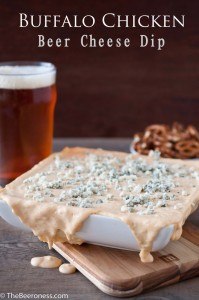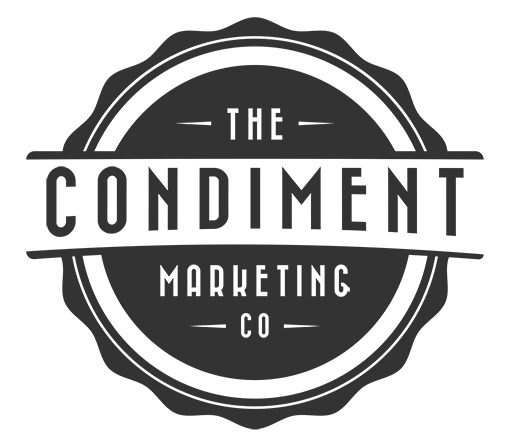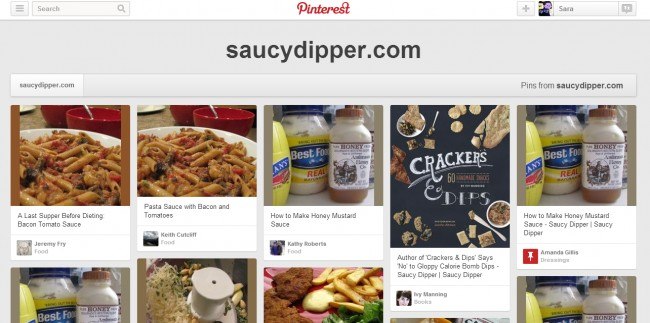Let’s not sugar coat this. Your food business needs to be on Pinterest.
More people share content on Pinterest than they do on email. Top that with the fact that 57% of Pinterest users pin, re-pin, and interact with food-related content.
Convinced? Good.
What follows is a compilation of tips, tools, and examples of how your food business can drive traffic to your website as well as engage your fans.
Setting up your boards
Start with 7-10 boards and build over time. Because so much of Pinterest is based on the search feature, think about the keywords people use to find you. Then write descriptive and compelling copy for your profile and boards.
Not sure how to categorize your boards beyond “recipes”? Try some of these ideas.
- In the office! Post pics of your facility, events, team members, and anything that helps to tell your company story. (See Outta the Park BBQ Sauce’s board called “Pics of Us.”
- On the street. Show us where your product shows up around town (events, promotions, etc.).
- Rave reviews. Feature testimonials and media mentions.
- Gratitude. Promote retailers and partners with pins!
- Make a board for every persona. Do kids love your dressing for dipping? Do people with Celiac like it better than other gluten-free dressing varieties? Pin articles/images of interest for each of your target markets.
- Give back. Highlight a charity or cause your business supports.
- Food you won’t forget. Your customers enjoy all food, not just your product. So, categorize recipes and products by meal type, season, holiday, and so on. The more specific the more memorable it will be. See Bob’s Red Mill Fabulous Fall Favorites board for an example.
- Serving suggestions. Load up on recipe and serving ideas to help promote your product.
Posting the most pinnable images

This here picture of beer cheese dip was one of THE most popular recipe pins of 2013. Notice the deep colors and vertical dimension.
Your pins should be a mix of images from your website/blog, other websites, and re-pins of images you find on Pinterest. If the image doesn’t have a home on any website, you can upload it directly to Pinterest, but it is better to create a blog post for that image and then pin it from the post. One of the biggest benefits of Pinterest is its ability to drive crazy traffic to your website, so don’t miss out by uploading images willy nilly.
The best pin size
There is conflicting advice on what makes the perfect pin size, and since the Pinterest interface changes, it’s a moving target. For now, if you prefer smaller images try 238 px wide x 284 px high, and if you want something bigger, go with 736 px wide x 1128 px high. Regardless of size, make sure the image is taller than it is wide.
Titles and captions
Let’s back up for a second. When you add an image to your website, name the file using one of your keywords. (“Img4.jpg” is not a good image title, but “rich-beer-cheese-dip.jpg” is a good title.)
When it’s time to write your caption on Pinterest, create one that is a couple short sentences and includes keywords early on in the description.
About those hashtags…
Hashtags can be useful, but use them sparingly. They are distracting and mobile phone users can’t click on them.
What to pin?
Now that that’s out of the way, here are a few ideas for pinnable images you could create for your food brand.
- Coupons
- Product images with detailed descriptions and a price
- Food images/recipes with vibrant colors in foreground and light colors in background
- Quotes
- Checklists
- Cute animals and babies (Whole Foods re-pinned this image of a puppy accompanied by a fun quote. Double whammy.)
- Positive, affirming messages
- DIY tips and hacks
- Funny, off-the-wall images
By the way, if you’re looking for tools to help you create pinnable images, check out PicMonkey and Pinstamatic.
Promote your Pinterest presence
Achieving a solid Pinterest following will take time and require you to pin a high-volume of interesting content. It always comes down to great content. In the meantime, here’s how to build a following:
- Follow a lot and a variety of Pinterest users.
- Include a link to your Pinterest profile on your website and in your email newsletter.
- Share pins on your other social media streams.
- Let website visitors easily pin images from your website. (“Pin It!” is a nice tool for the footer of every blog post for example.)
- Make collaboration an integral piece of your Pinterest strategy. In other words, create boards and invite fans to post their own images. You could even ask some of your brand advocates to join the party. See what Relish Magazine with their guest pinners like the Hummingbird High blog.
- Create your own hashtag for your brand and/or your current marketing campaign. Include that hashtag in all relevant captions.
Track your Pinterest progress
As with all social media efforts, you need to track your progress so you can refine your approach as you go. There are a couple ways to do that.
- Check your Google Analytics! When I look at traffic for SaucyDipper.com, I’m always impressed with the way Pinterest drives traffic. 91% of our social media acquisitions!
- Look at http://pinterest.com/source/yoursiteURLhere (with your URL at the end) to see all the pins from your website currently on Pinterest.
***
How have you used Pinterest to engage your audience and promote your food business? Please share your tips in the comments.






